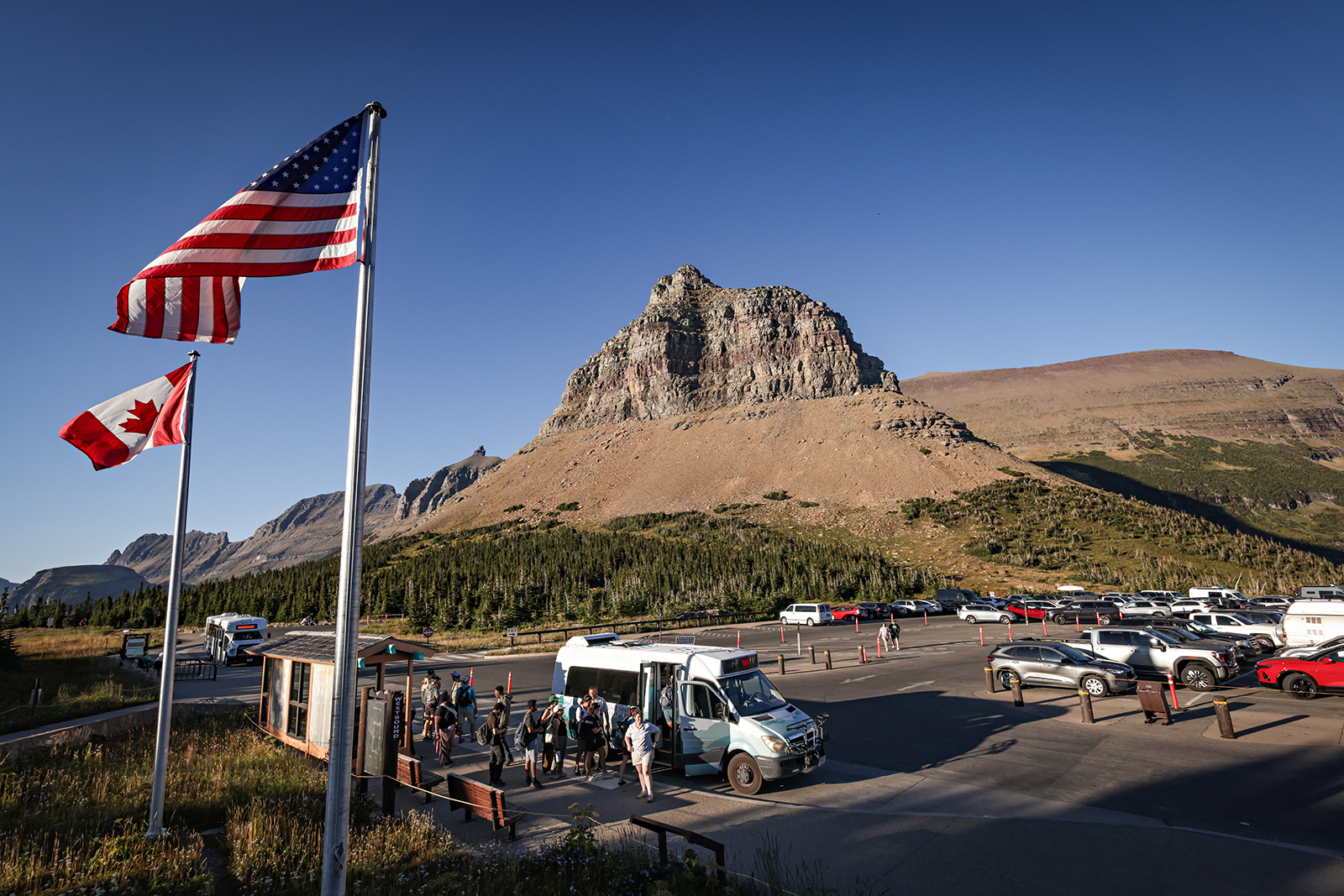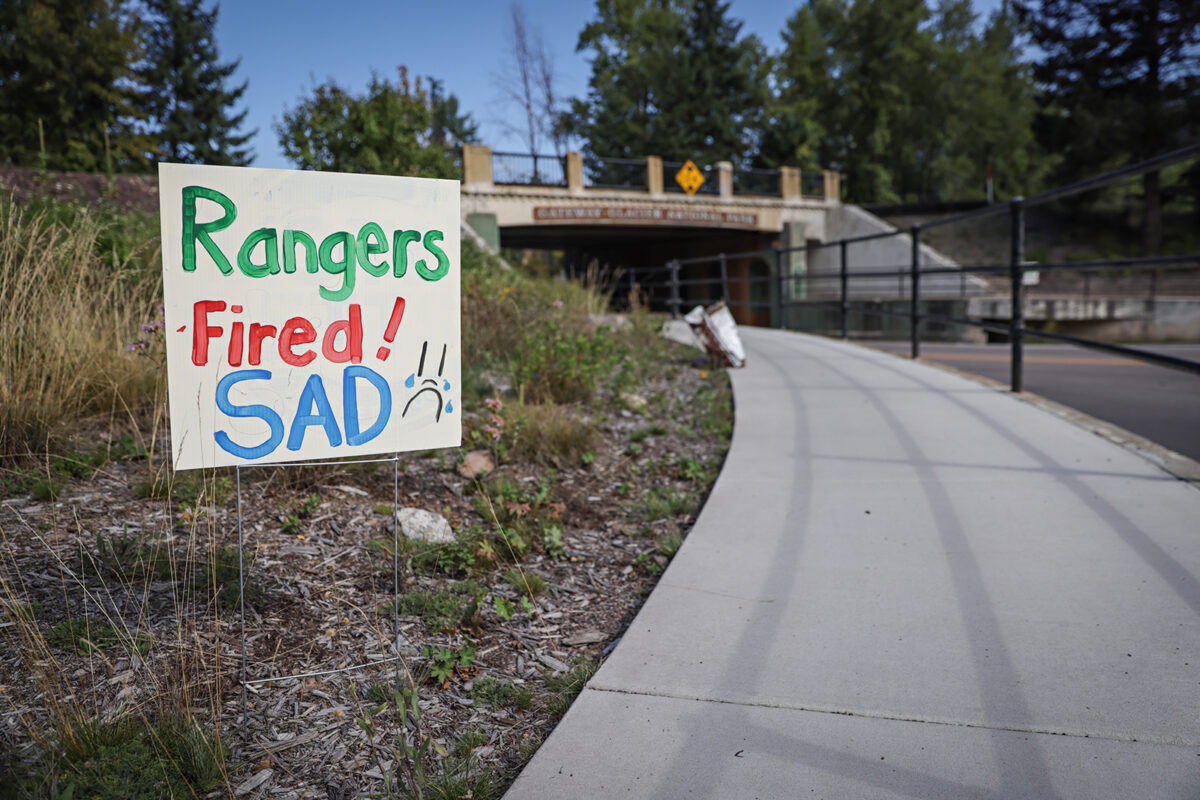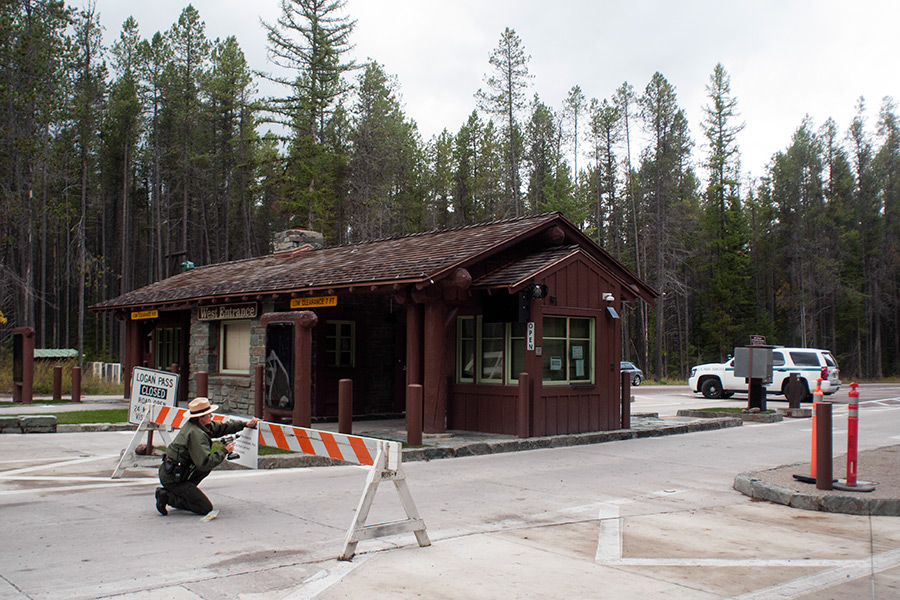As Glacier Reduces Visitor Services Amid Government Shutdown, Parks Advocates Push for Full Closure
Although most national parks remain “as accessible as possible during the federal government shutdown,” visitor services in Glacier National Park will be limited or unavailable as officials await guidance and business leaders are left “flying blind”
By Tristan Scott
Days after the National Park Service published a new report detailing the billions of dollars in economic benefits national parks deliver to gateway communities, a deadlocked Congress forced a shutdown of the federal government, leaving parks unfunded for the first time since 2019.
The shutdown not only compounds the staffing shortfalls that have strained rank and file park employees and visitor services for the past nine months, but it also leaves the business community grasping for answers as they encounter an information deficit from federal officials.
In the Flathead Valley, the silence from land management agencies under the U.S. Department of the Interior and U.S. Department of Agriculture has been particularly deafening, especially when compared to previous shutdowns. In the past, the executive departments responsible for the National Park Service and U.S. Forest Service, respectively, have published contingency plans and issued talking points to local visitor bureaus and tourism leaders about what the public should expect in area parks and forests. In the days leading up this shutdown, however, the communication apparatus seems to have been muzzled, leaving federal employees in the dark.
Local tourism officials said the result has been little or no guidance on what to tell visitors to the Flathead, where federally managed lands are an economic driver.
“The communications staff at Glacier National Park in particular has always been such great partners in providing visitor information so we can amplify that messaging. But this time, I am concerned that [Interior Department officials] are not providing any information,” Diane Medler, executive director of Discover Kalispell, said Wednesday. “This time feels very different. This time, it feel like we’re flying blind.”
Medler doesn’t blame Glacier’s park staff for the communication gap. When she visited Glacier’s website on Wednesday morning, it directed visitors to the following Interior Department website: www.doi.gov/shutdown. The website is a list of hyperlinks to the contingency plans issued by various bureaus and offices of the Interior. The contingency plans were published much later than in previous years, and contained fewer details.
“This time,” Medler added, “all we got from the Interior Department was a nine-page PDF document written in government speak.”

Although the Department of the Interior explained on its website that national parks will remain “as accessible as possible during the federal government shutdown,” Glacier National Park closed its visitor centers and fee stations Wednesday morning while leaving minimal staffing in place for public safety, trash collection and bathroom cleaning. Backcountry permits will no longer be issued, and the Two Medicine Valley was closed at the park boundary for the season.
The Going-to-the-Sun Road remains open to visitors for now. But park officials often close the road at Avalanche Creek beginning in October when inclement weather makes the 50-mile long thoroughfare’s upper reaches too dangerous for visitors to safely traverse. A single snow event can create hazards that make the alpine highway over the Continental Divide impassable, while rain can create hazards due to rockfall and mudslides.
Jeff Mow, the former superintendent of Glacier National Park who during his tenure endured two government shutdowns in 2013 and in 2018-19, as well as Covid-related closures during the pandemic, was among a group of 40 former national park superintendents who recently urged Interior Secretary Doug Burgum to close the National Park System in the event of a government shutdown on Oct. 1.
“Past shutdowns in which gates remained open with limited staff have hurt our parks: Iconic symbols cut down and vandalized, trash piled up, habitats destroyed, and visitor safety jeopardized. If you don’t act now, history is not just doomed to repeat itself, the damage could in fact be much worse,” according to the letter, which the superintendents sent to Burgum on Sept. 25.
During the 35-day government shutdown in 2018 and 2019, Trump allowed parks to stay open while operating with skeleton staffing, resulting in vandalism, illegal camping, off-road travel, and the desecration of historic sites. In their letter, the former superintendents warned of similar problems if the park system remains open this go-around.
“National parks don’t run themselves. It is hardworking National Park Service employees that keep them safe, clean, and accessible,” the letter states. “Park staff manage everything from routine maintenance of buildings and trails to educational programs that teach visitors how to safely and attentively engage with nature to guided tours that share the stories of our collective history. National Park Service employees study, monitor, and learn from our natural world through long term projects and research – and these projects, in addition to irreplaceable resources and habitat, are in jeopardy during a shutdown.”
In Glacier, the shutdown nearly seven years ago had negligible impacts to visitor services, in large part due to the park’s seasonal nature. This go-around, however, Mow worried that skeleton staffing will be overwhelmed in the event of an emergency, while resources could be permanently damaged.
“Our goal should not to become good at operating parks during a shutdown, or at operating parks under a reduced workforce,” Mow said. “National parks aren’t designed for that. Parks have an abundance of infrastructure, visitor centers and interpretive programs to tell their stories about why parks are an important part of the country’s heritage and promote their mission and keep the public safe. Right now, we’re struggling to meet basic visitor expectations.”
Compounding the consequences of the shutdown is an ongoing staffing crisis.

Since January, the National Park Service has lost at least 24% of its permanent staff, according to the National Parks Conservation Association (NPCA). Across the country, parks are cutting ranger-led programs, closing visitor centers, delaying infrastructure projects, and falling behind on critical maintenance and research because “there just aren’t enough people left to do the job,” according to NPCA.
“It’s certainly been hard on the staff,” Mow said. “I have spoken to several superintendents who shared just how difficult all these personnel actions taken over the past nine months have been. It made it really hard just to get through the summer. We have such a hard-working and committed staff at Glacier that it really pains them not to be able to provide an adequate level of staffing, because it takes a toll not only on visitor services, but on the resources. We see cars parking off the road, vegetation getting trampled and research and monitoring programs going dark.”
Sarah Lundstrum, the Glacier program manager for NPCA based in Whitefish, said Glacier is fortunate that it ended its timed-vehicle entry program on Sept. 28, days before the shutdown went into effect. But she worries whether Glacier’s road crews will have enough time to remove guardrails and prepare the Going-to-the-Sun Road for winter before snow buries its upper elevations. The timing of this shutdown, she said, demands a full closure.
“National parks are uniquely not created to be open with limited staffing at times like this,” Lundstrum said. “We saw it in the 2018-19 shutdown when damage to some parks was irreparable. Those consequences can be avoided by simply closing the parks until they’re funded. Parks aren’t just for our summertime recreation; they’re supposed to be here forever.”
Parks employees who signed on to be part of the forever business are also operating with a dearth of information, Lundstrum said. According to the Interior Department’s instructions, furloughed employees are to “check emails periodically (e.g., twice a day) with Shutdown Update in the subject line. This can provide valuable information to staff, such as whether an employee is being called back as exempt or excepted status; information on benefits and pay; when the shutdown may end; time period of furlough being extended; etc.”
Furloughed employees are also expected to monitor public broadcasts and the internet “for information and public notices relevant to any appropriation or continuing resolution for DOI passed by Congress and signed by the President,” the contingency plan explains. “They will be expected to return to regular duty on the next workday immediately after the end of the lapse in appropriations.”
On a national scale, the shutdown could turn away as many as a million park visitors every day. Gateway communities could lose as much as $77 million every day parks are closed in October. And parks would stand to lose as much as a million dollars in fee revenue daily.

Medler said the effects of the park’s closure on visitors and the local economy are concerning, but so is the potential for resource damage that could occur in Glacier while park employees are furloughed.
“I am really concerned about what might happen in the park without the rangers there and with how quickly the weather is changing,” Medler said. “If a storm suddenly comes in and people are out in the backcountry or on a longer hike or at Logan Pass, they could be stranded.”
Mow, who lives in Whitefish, said he understands firsthand how visitation to national parks fuels local economies.
“I am certainly very aware of the business community and how much having parks open means to local economies,” he said. “But at the same time, we have to protect the visitor experience. If we had to operate parks all the time at shutdown level, or at the reduction-in-force level, the visitor satisfaction ratings at national parks would decline significantly.”